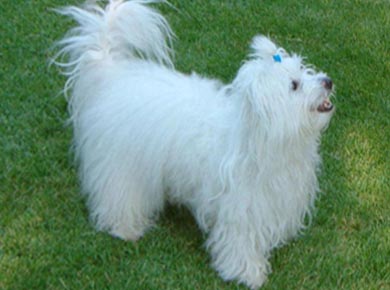
 This dog is now classed in the non sporting group now but originally several hundred years ago in Madagascar was descended from the bichon. Back then it was used as a ratter on ships in the area and soon became a favorite in the royal court, before becoming a relatively common companion dog over there.
This dog is now classed in the non sporting group now but originally several hundred years ago in Madagascar was descended from the bichon. Back then it was used as a ratter on ships in the area and soon became a favorite in the royal court, before becoming a relatively common companion dog over there.
Now they are a massively friendly dog that have given up almost any hunting instinct, but of course go back to where they originated from and I am sure you will find a breeder that still breeds them for a work purpose of vermin control.
The Coton De Tulear
is related to the French Bichons, Maltese and the Italian Bolognese breeds. Its name comes from the conjunction of Coton (French for cotton and its cotton/ woolly like coat) the city of Tulear in southern Madagascar where it remains one of the most popular dogs to this day. They are still relatively rare in the rest of the world.
Being related to the bischons it is very friendly, gentle and affectionate. They are also known to be very social with most dogs and all humans (adults and children). They become very attached to their host family but their tendency not to bark usually prohibits them as watchdogs. They continually strive to please their masters, and so are good at learning tricks, including their ability to perform the trick of walking just on their hind legs.
Because of their energy and eagerness to please, these dogs need regular contact with their owners. Lack of this can reduce their friendliness and increase stubbornness.
Their coats come in three main markings: white & black and white and tri-colored.
Coton De Tulear size: 25-30 cm, 5 – 7 kg
Coton De Tulear grooming: Their grooming schedule is one of the most arduous of all dogs. The cottony/ fluffy top coat required DAILY careful grooming to remove dead hair. It is also necessary to remove excess hair from their ears and between the pads on their feet. While grooming require diligence, they only require one or two bathes per YEAR to maintain oil and reduce tangles that occur from washing. It is recommended that their coat not be cut.
Because they have a single coat (breed for the tropics) that has poor insulation properties they often prefer to live indoors. That said they are paradoxically eager to play outdoors, and with their high socialization requirement care must be taken to keep them warm in cold climates.